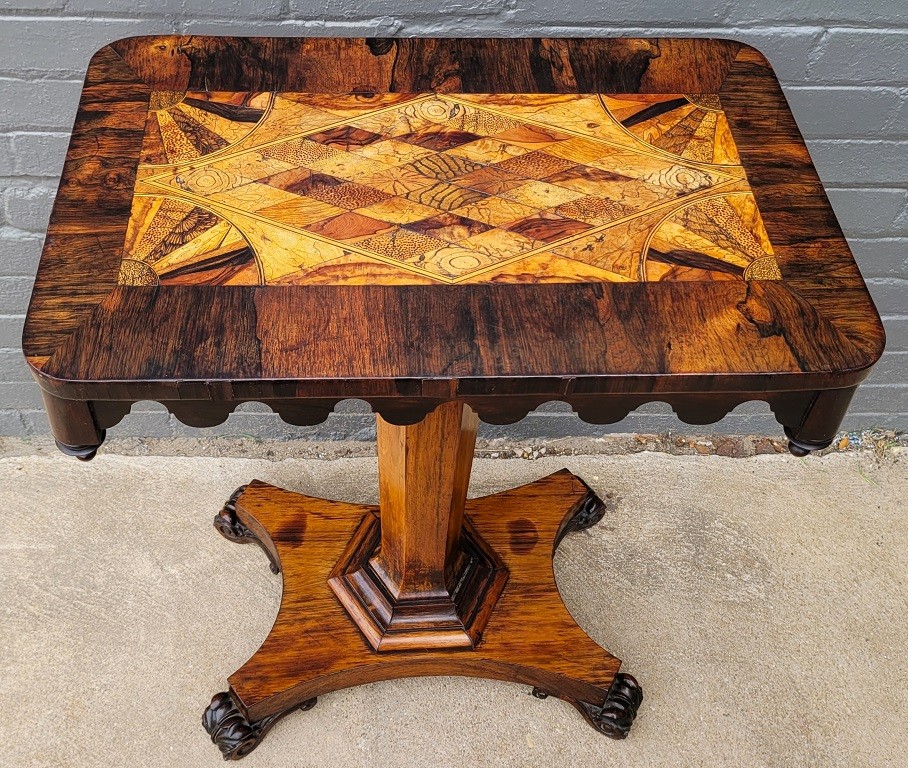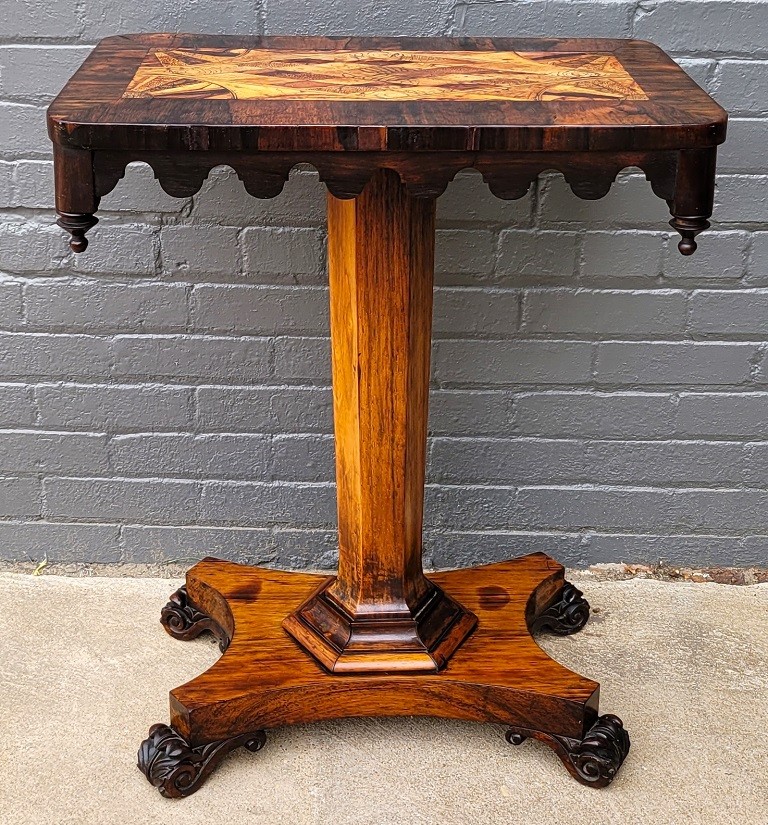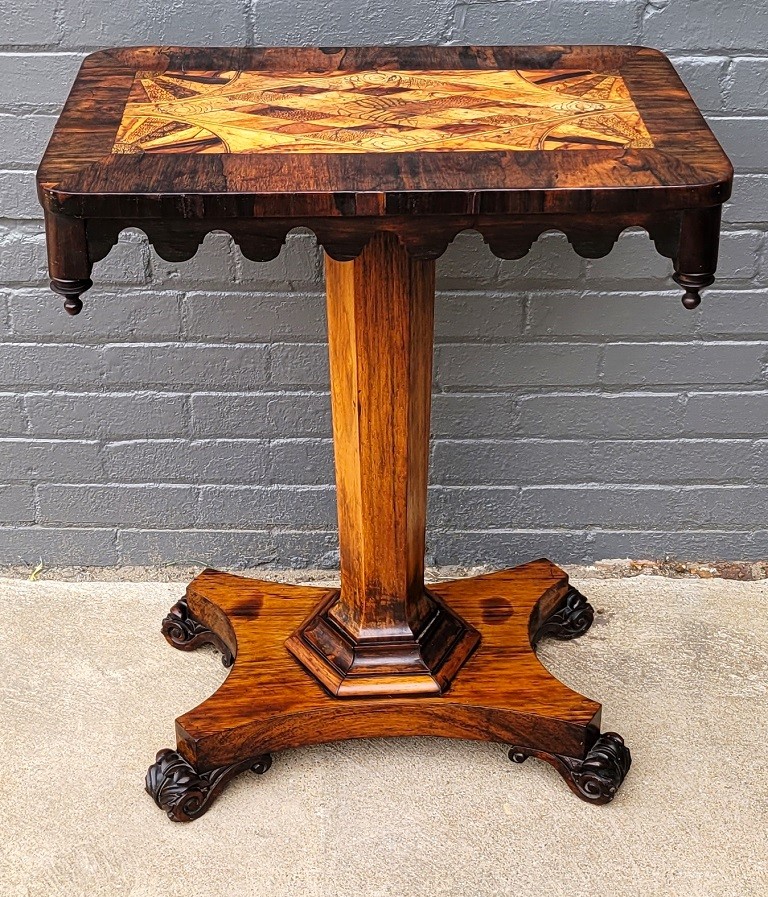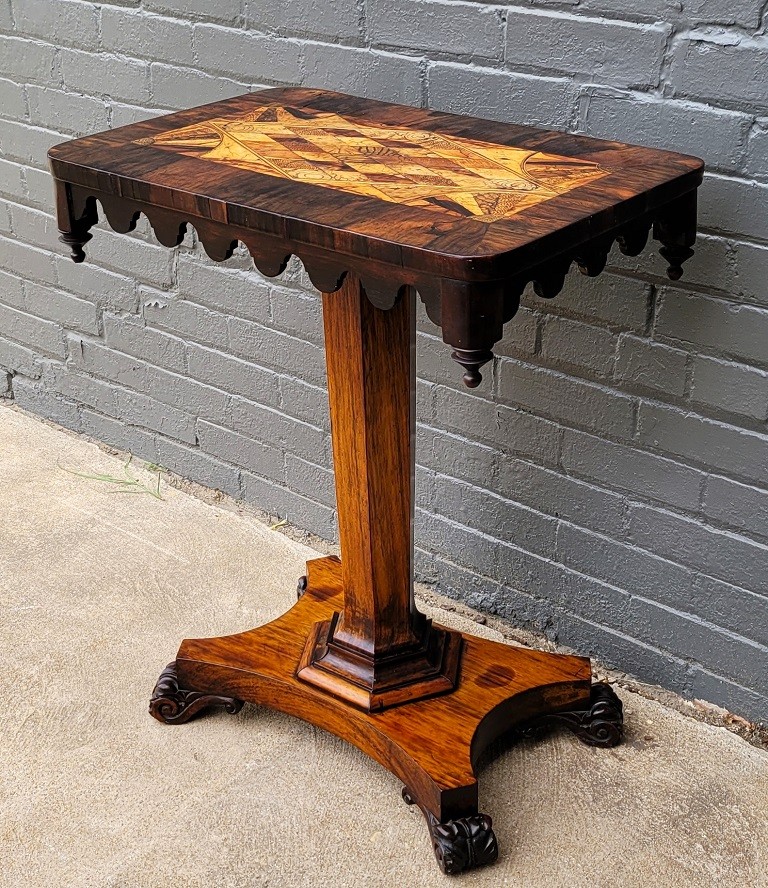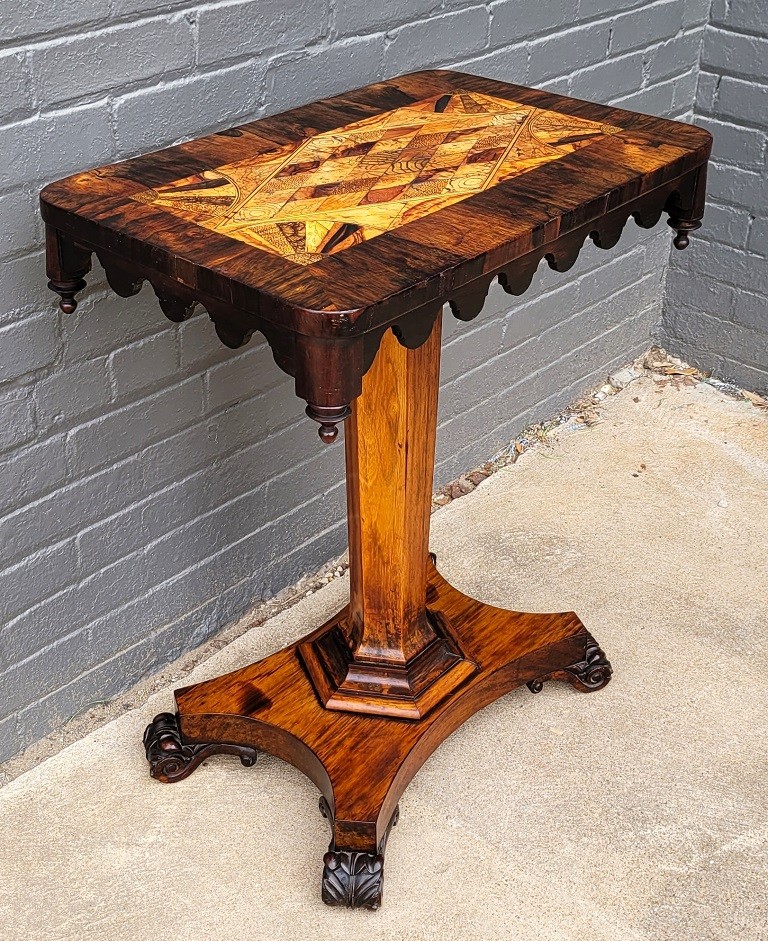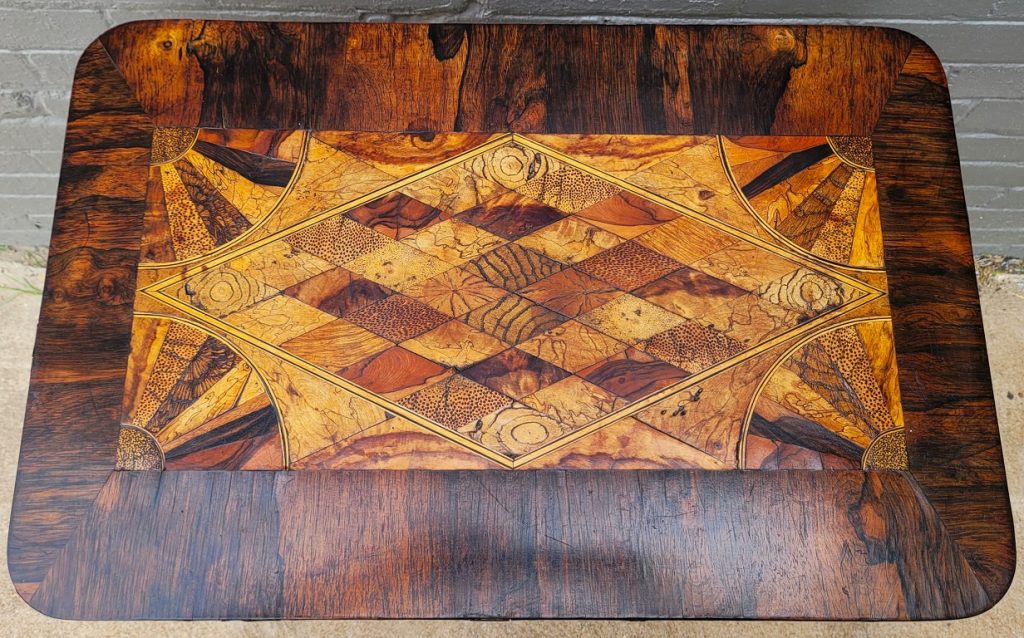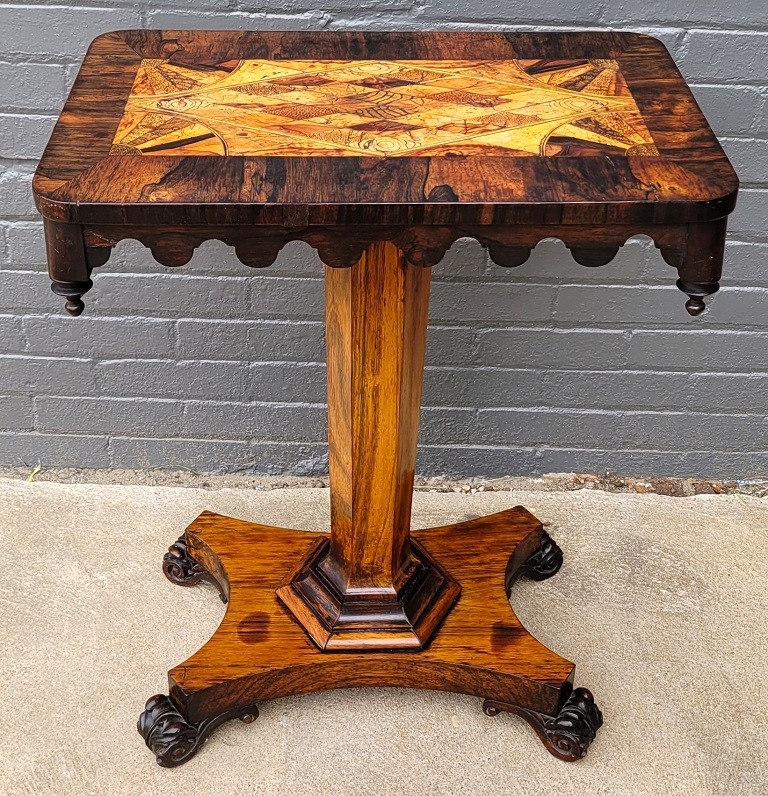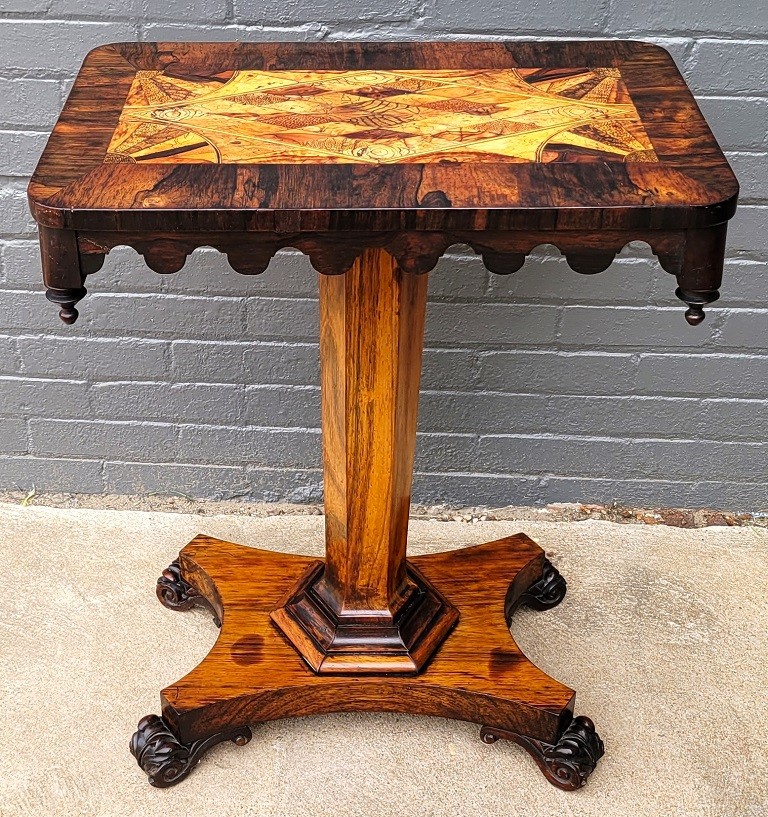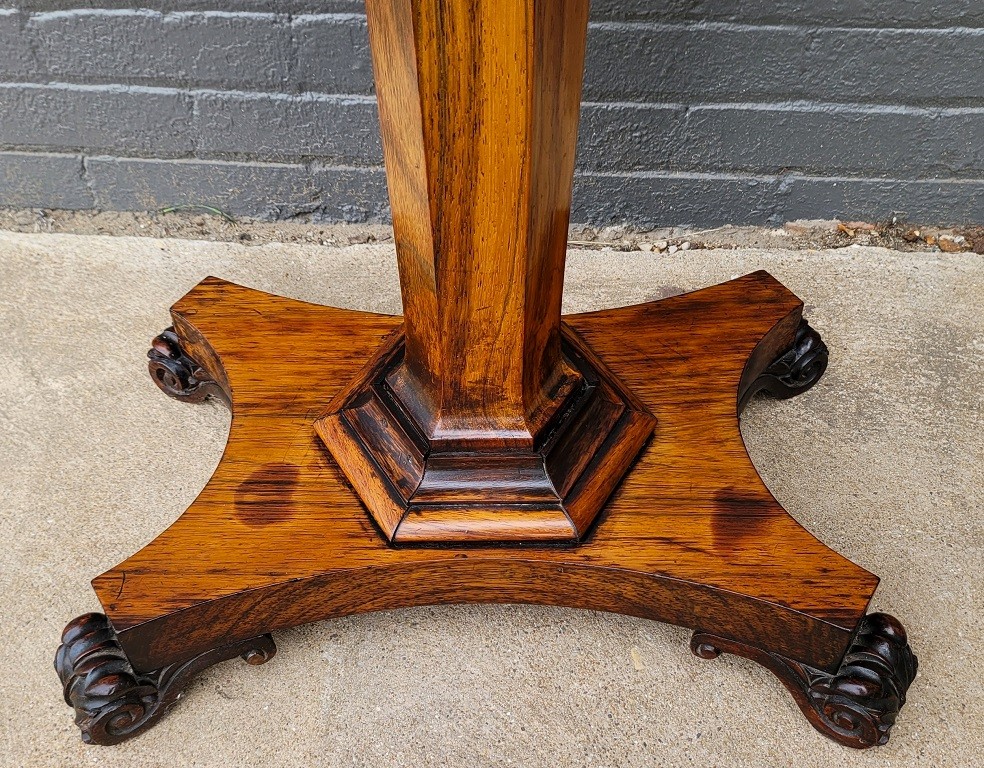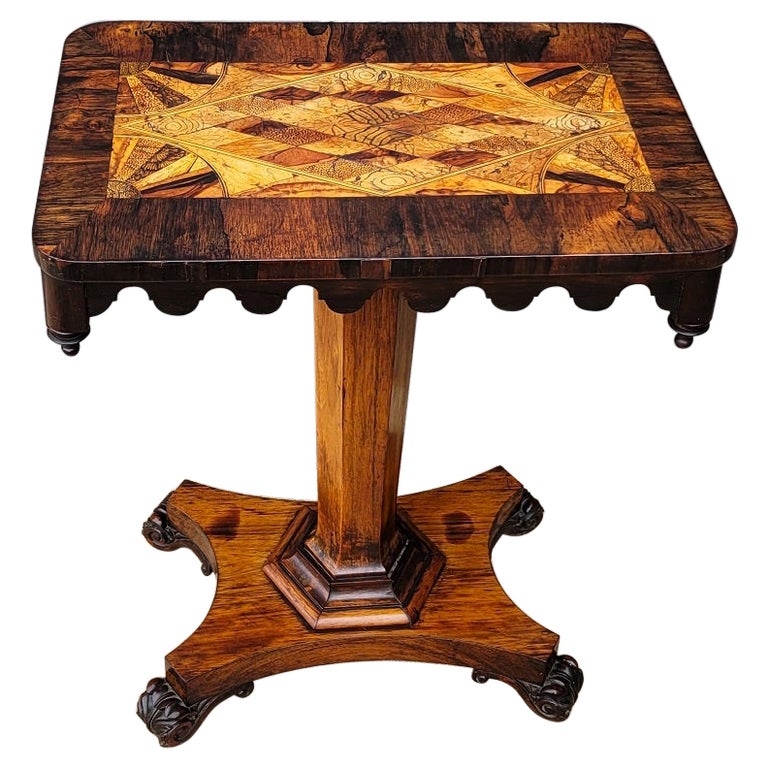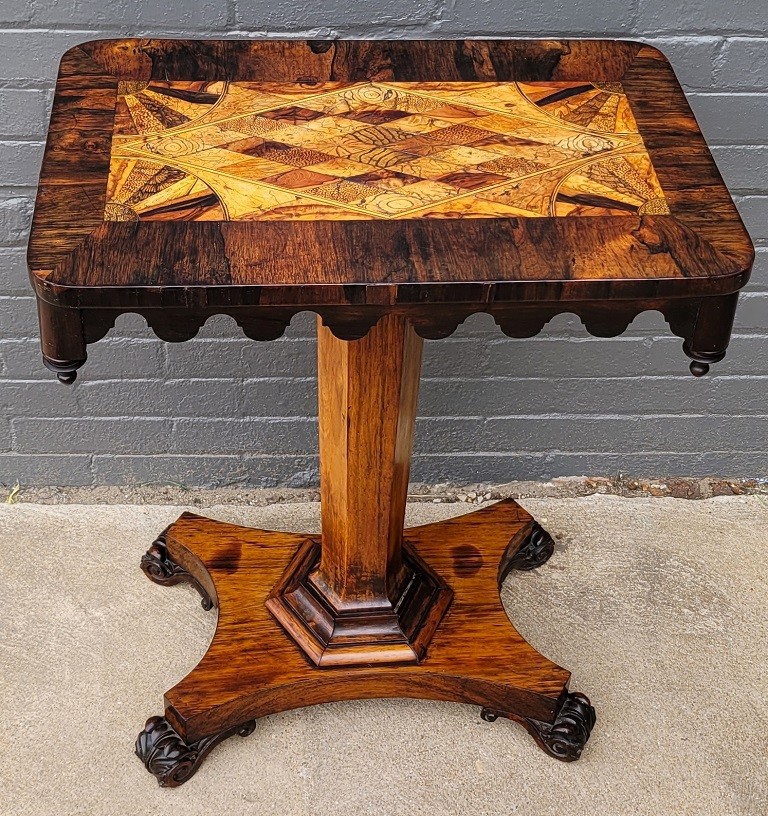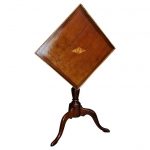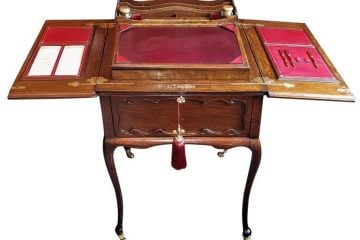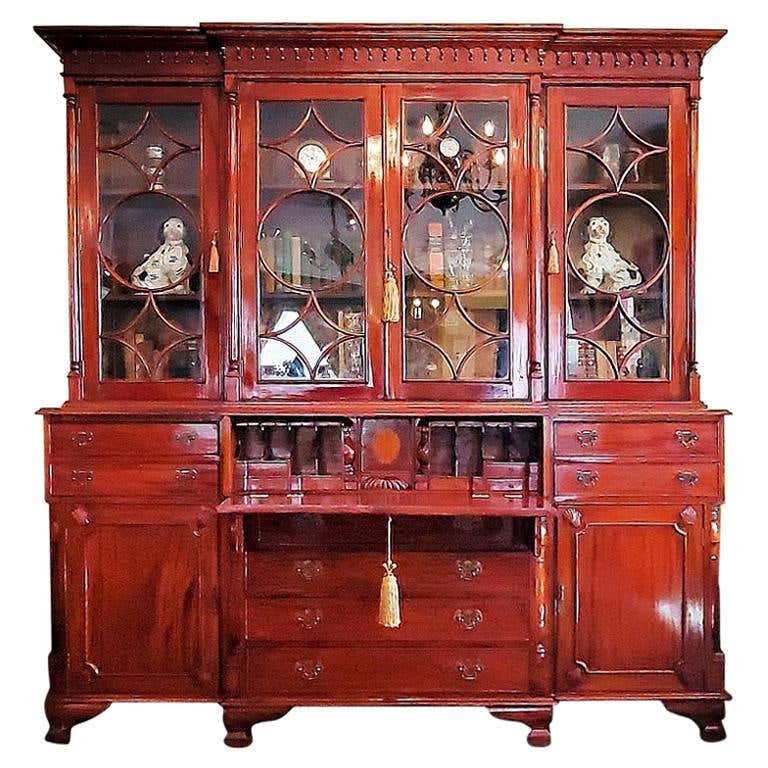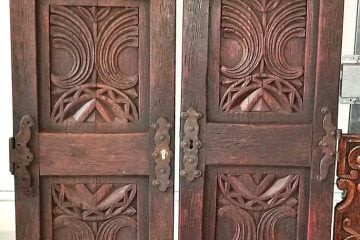Early 19C British Colonial Specimen Wood Side Table
PRESENTING A GORGEOUS, UNIQUE and INTRIGUING Early 19C British Colonial Specimen Wood Side Table from circa 1830, the reign of William IV.
Rosewood veneered top inlaid with various exotic and rare specimen woods in geometric shapes and fan patterns.
The top has a beveled edge with downward pointing arches, leading to downward pointing finials on each corner.
It has a single stem support column or pillar leading to a simple solid base with turned paw feet.
The design of the central support and the base with paw feet are classically William IV.
The support column and base appear to be made of ‘Elm”.
We believe that this piece is probably British, but could have been made in the the West Indies (Caribbean) for export to the UK. It is totally different from the normal pieces of specimen wood furniture (which we also love … like Anglo-Ceylonese pieces), thus making this piece so unique and puzzling at the same time!
We definitely feel that it is Colonial in its origin! Some of the parquetry inlaid woods appear to have pyro-work, namely, the use of a hot needle to make spots like ‘leopard spots’!
We have NEVER seen another table quite like this,
it is truly UNIQUE ….. which leads to the intrigue!
The exotic woods used in the diamond and fan designed table top are extremely rare woods and mainly of colonial origin, hence our opinion that this was made in a Colonial part of the British Empire for export and return to Britain.
Despite it’s obvious beauty and uniqueness, we are of the opinion that the table top and the base did not start out life together and are a ‘marriage’ of sorts!
Firstly, the base is made of elm and secondly, when the table is turned over, it is obvious that the central support and base were added to the table top as some stage in the 20th Century.
It is possible that either (1) the original base was damaged and replaced or (2) most likely in our opinion, the table top never had a base and was designed as a ‘tray’ which sat on a table on the downward pointing finials!
As a simple ‘tray’ this would still be an exceptional and rare piece of furniture.
Whilst we can confidently say that the base is William IV …. the table top raises other questions about age and era.
It is clearly in the ‘Gothic Revival Style’ with the beveled edges and downward pointing arches, leading to downward pointing finials on each corner. But is is also clearly an Early 19C Gothic Revival piece, based upon the rosewood veneers which look classically Regency era (1790-1820).
This would explain why someone decided to mount it on an 1830’s base!
William IV (William Henry; 21 August 1765 – 20 June 1837) was King of the United Kingdom of Great Britain and Ireland and King of Hanover from 26 June 1830 until his death. The third son of George III and younger brother and successor to George IV, he was the last king and penultimate monarch of Britain’s House of Hanover.
William served in the Royal Navy in his youth and was, both during his reign and afterwards, nicknamed the “Sailor King”.[1][2] He served in North America and the Caribbean. In 1789, he was created Duke of Clarence and St Andrews. Since his two older brothers died without leaving legitimate issue, he inherited the throne when he was 64 years old. His reign saw several reforms: the poor law was updated, child labour restricted, slavery abolished in nearly all the British Empire, and the British electoral system refashioned by the Reform Act 1832. Although William did not engage in politics as much as his brother or his father, he was the last monarch to appoint a prime minister contrary to the will of Parliament. Through his brother, the Viceroy of Hanover, he granted his German kingdom a short-lived liberal constitution.
At the time of his death William had no surviving legitimate children, but he was survived by eight of the ten illegitimate children he had by the actress Dorothea Jordan, with whom he cohabited for twenty years. William was succeeded in the United Kingdom by his niece, Victoria, and in Hanover by his brother, Ernest Augustus.
Link: https://en.wikipedia.org/wiki/William_IV_of_the_United_Kingdom
Early 19C British Colonial Specimen Wood Side Table.
Provenance: Bought from an Irish Country Mansion Estate 20 years ago.
Dimensions: 29″ tall, 24″ wide and 16″ deep
Condition: Good original condition. Some blemishes and very minor repairs of veneer on the sides, as one would expect with a piece this age. Base not original to top (see full listing).
SALE PRICE NOW: $3,600.
